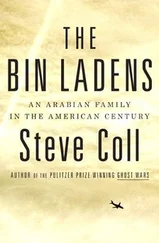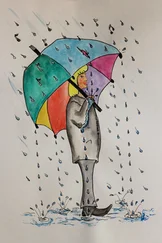
Dalton Fury
Kill Bin Laden
© 2008
A DELTA FORCE COMMANDER’S ACCOUNT OF THE HUNT FOR THE WORLD’S MOST WANTED MAN
The views expressed are those of the author and do not reflect the official policy or position of the Department of Defense or the U.S. Government .
Dedication
Personally… to my wife and daughters who let me live the dream and whose undying spirit and love made it all worthwhile.
Professionally … to the intelligence shop, the backroom boys , an eclectic band of truly indefatigable and dedicated experts in rationalism and empiricism. These men are hell-bent on unwrapping the delicate secrets of international terrorism and have my utmost respect.
They include
Randy B.
Brian C.
John C.
Jerry D.
Jimmy D.
Jody F.
Walt G.
Eddie H.
Tim H.
Roger H.
Danny M.
Kelley P.
Glenn P.
Jamie R.
John S.
Dennis S.
Shannon T.
It’s about damn time. Finally, we can read, be inspired by, and follow the heroic actions of 1st Special Forces Operational Detachment (Delta Force) while they hunt down Usama bin Laden. Never before has the brave but ultimately doomed effort to find and kill Usama bin Laden been accurately written about. Dalton Fury is uniquely qualified to write this account because he is one of this great nation’s elite soldiers, a Delta Force operator, and he was there. This is only the third time a former member of SFOD-D has written about the world’s premier counterterrorism organization. However, this is the first time that actual combat operations have been detailed in such a compelling and honest manner.
To become a member of Delta Force you first and foremost have to have a great military record-a proven record of excellence. You then have to go through a “selection course” designed to test your every fiber as a soldier. First, you go running through the woods with a sixty-pound bag and weapon on your butt for up to forty miles a day, every day for a month. This course reduces most men to tears of frustration and resignation. If you make it through this course and no more than three in one hundred do, you then have a six-month training course that turns a great soldier into a super one.
Kill Bin Laden is a tribute to all soldiers and especially to the Delta Force operator. The author takes us inside Delta so that we can better appreciate and support those protecting and fighting for us in this war on terror.
The brilliance of Kill Bin Laden is the manner in which the author shares the complexities of combat and shares the credit for successful operations with the entire organization. It is easy to forget when confronted with these “managers of violence”-these supremely talented and staggeringly brave “operators”-that without great intelligence, staff officers, and brilliant logistic operations nothing happens. That without competent and caring leaders, without the best noncommissioned officer corps in the known universe, none of the remarkable accomplishments celebrated in this book could have come to pass. Fury gives the full measure of credit where it rightfully belongs: to his men. It is one of the traits of a great leader.
This spellbinding book is simple, and in that simplicity lies its brilliance. The author does not hide his love for his fellow soldiers, his admiration for their bravery and intellect, and his appreciation for their dedication to each other and to this great nation. It is Fury’s directness, his self-deprecating look at himself while taking the blame for the inevitable mistakes and his unflinching credit to his men during their many successes that rings so true in these pages; you are reading about serious combat from a serious combat leader. Fury is a great soldier and leader. He is also a passionate and articulate writer: Kill Bin Laden is worthy of all three parts of him.
This book is so good, so topical, and so necessary that you need to stop reading this foreword and get to it.
– Colonel David Hunt (U.S. Army, Ret.)
I found the tattered little green notebook while cleaning out a closet, and as I slowly leafed through the pages, I seemed to no longer be sitting safe in my home, comfortable at my kitchen table. Instead, the scribbles transported me back five years, back to the dirt and rocks of the high peaks of the Spin Ghar Mountains in Afghanistan, where I served as the Delta Force troop commander and senior ranking military officer at the Battle of Tora Bora. Our orders were to kill or capture the most wanted man in the world, Usama bin Laden, and bring back proof.
For years, I had given sporadic and not-so-serious attention to piecing together a book about that important time. The story of the famous battle had been told and retold in newspapers, magazine articles, and books and broadcast on television, but most of what was revealed was in error. Some reports were little more than flights of fantasy that might as well have been about a military action on the far side of the moon. The record needed to be set straight, but for me to publish a book about the extraordinary and secret military operation would be difficult if it was based only upon the available public record.
Then I came across my notebook, and the faded pencil and pen scribble marks brought it all back to life. Lacing the little pages are my handwritten notes of actual words spoken by bin Laden, along with hundreds of numbers and letters that identify people, locations, and quantities, as well as my real-time thoughts, guidance, orders, and ideas. Without such detail, this story could never have been much more than a broad and general description of the battle. These notes provided the path to take a reader right into the dark heart of Tora Bora, that forlorn and notoriously well-known mountain range forever etched in America’s psyche.
By the summer of 2006, I had completed about 90 percent of the manuscript, but was still undecided about taking it public, for the desire to maintain secrecy is monumentally strong among Delta Force alumni. Then I received a telephone call from Dr. John Partin, the top historian at the Special Operations Command (SOCOM) in Tampa, Florida, who asked if I would be interested in helping SOCOM write the classified historical narrative of what had happened at Tora Bora. History is only history if it’s accurate, and is usually best told through the first-person accounts of people who were there.
As I mulled over that request, it became obvious that this story was going to be told, with or without me. The time had come. I made it clear that I would help SOCOM, but that there was a good chance I would also publish my own version some day. The historians at SOCOM had no problem with this and signed me up under their standard consulting agreement that required that I disclose no classified information, which I would never do anyway.
So, with the formalities out of the way, I headed south and met a Green Beret officer who was moonlighting inside the SOCOM history office that had been tagged to re-create the official version of what happened at Tora Bora. He is now a lieutenant colonel and holding down a different job, but at the time, he was the SOCOM deputy historian. This officer is a very detail-oriented guy and a consummate fact-checker, question asker, and professional in every way. He worked diligently for months digging for every nugget of information he could find. We spent sixty hours together working on that official history, and I’m certain there isn’t another man alive who knows more details about what happened at Tora Bora than he.
Читать дальше













